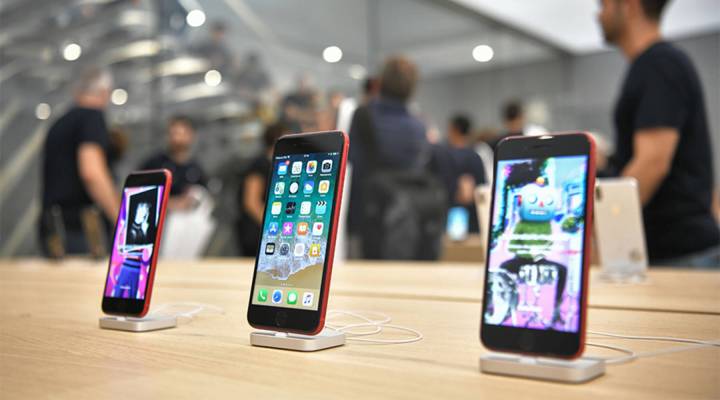
What might help Apple sell more iPhones? Cheaper iPhones
What might help Apple sell more iPhones? Cheaper iPhones

Apple released its earnings Tuesday afternoon, and although it met its lowered expectations, revenue from iPhones was down 15 percent over the same quarter last year, and the future trend is still down. For years, Apple’s smartphone strategy has been to make premium devices with a premium price tag. The starting price is basically $1,000 for a new flagship iPhone. But those prices are hard to swallow in China and India, markets Apple is depending on to grow its global market share. Even here in the United States, consumers aren’t upgrading their phones as much as they used to. Molly Wood talks with Julie Ask, principal analyst at Forrester Research, about how Apple can keep commanding such high prices. The following is an edited transcript of their conversation.
Julie Ask: [Apple has] relied on a very affluent base of consumers in the past that can afford to buy not only devices but services and subscriptions within the ecosystem. I think one of the things that is hard to tell and I think one of the things they’re not going to tell us is: Is it inhibiting their ability to attract new consumers into the ecosystem?
Molly Wood: It’s interesting because it feels like it was a strategy based on an old economic model of ongoing recovery where, if you tie it to the broader economy, it was based on the idea that there’d be an economic recovery, and wages would continue to go up, and there’d be lots of consumer spending, and we’re kind of not seeing that.
Ask: Yeah, so we’re not seeing that, and I think if you look at the opportunities for growth, it’s either get the same people to upgrade faster or it’s attract new consumers into your market. And you look at who those new consumers are and they’re simply not as affluent or as wealthy as the existing base. They’re either young or they’re living in markets where there’s lower wages overall. I think the trouble with these large consumer electronics companies is the smartphone came along at this time, and it’s been an amazing, amazing 10- to 15-year ride at this point, but there isn’t another “it” device that’s coming after it that’s going to make up for the revenue with the slower replacement cycles and the slower uptake from consumers in the market today.
Wood: So what do you think comes next? Some manufacturers are sort of bucking this trend. OnePlus is going with a cheaper phone. Is that overly simplistic as an answer or would cheaper phones help sell more phones?
Ask: If I were a smartphone manufacturer, I would test the market with less expensive devices. I say that based on someone who studies consumer behavior. The devices that are selling now in the market for $1,000, $1,100, $1,200 are amazing for photography and playing video games and watching TV, and when we see 5G come out, it’s going to be awesome. That said, the vast majority of the activity that consumers are doing on these phones is still around communication, instant messaging, texting my friends, triaging email for work, and I don’t need the latest, greatest device to do that. So I think it is reasonable to expect that consumers will say, “Hey, how do I really use this device, and do I really need something that costs $1,000 to $1,200 to triage my email?”
And now for some related links:
- We talk a lot about the Chinese market, but India is huge for smartphone makers. Shipments almost doubled between 2014 and 2018 to 150 million phones, according to analysts. A ZDNet report out of New Dehli says that for a few years, Apple was selling its older models, like the iPhone 5C, in India for low prices. But then Apple started pushing more expensive phones, sometimes even more than they were selling for in the United States, just as Chinese manufacturers like Xiaomi and OnePlus came into India with tricked-out smartphones that were half the price of the iPhone. So really old iPhone for the same price as a brand new flagship smartphone from OnePlus? Easy choice. The OnePlus 6 was released in India in 2018. ZDNet said it sold a million units in 22 days. For comparison, Apple sold 1.7 million units in India in all of 2018.
- On a completely different note, earlier this month the Department of Defense released a document about a $22 million program by the Defense Intelligence Agency that researched warp drives, invisibility cloaks, wormholes, stargates and alien tracking. Also, according to an old blog post about secret military projects, the CIA once tried putting listening devices on house cats. Not every idea is a hit.
There’s a lot happening in the world. Through it all, Marketplace is here for you.
You rely on Marketplace to break down the world’s events and tell you how it affects you in a fact-based, approachable way. We rely on your financial support to keep making that possible.
Your donation today powers the independent journalism that you rely on. For just $5/month, you can help sustain Marketplace so we can keep reporting on the things that matter to you.












